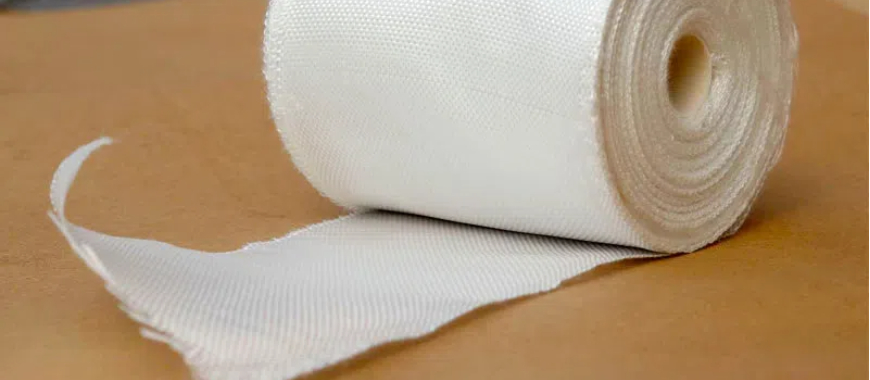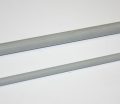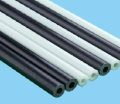
Bamboo fiberglass cloth is emerging as an eco-friendly alternative to traditional fiberglass cloth, offering a sustainable solution without compromising on performance. Premium bamboo fiberglass cloth offers superior strength and flexibility for all your sewing projects, available by the yard. This innovative material combines the durability of fiberglass with the natural benefits of bamboo fibers, making it an attractive choice for environmentally conscious industries. When compared to conventional fiberglass cloth, bamboo fiberglass fabric provides superior sustainability, as bamboo is a renewable resource that requires fewer chemicals and water to grow. The increasing interest in sustainable materials, such as 100% bamboo fabric, has led to greater demand for alternatives like bamboo fiberglass cloth, which supports the shift towards greener manufacturing practices while still maintaining strength, flexibility, and heat resistance.
What is Bamboo Fiberglass Cloth?
Bamboo fiberglass cloth is a hybrid material that merges the natural properties of bamboo fibers with the strength and durability of fiberglass. This innovative fabric offers a unique combination of eco-friendliness and performance, making it an ideal choice for various industrial and commercial applications.
Composition and Manufacturing Process
Bamboo fiberglass cloth is a high-performance textile created by combining bamboo fibers with fiberglass strands, resulting in a fabric that takes advantage of the beneficial properties of both materials. This innovative material is known for its unique blend of natural strength, durability, and flexibility, making it suitable for a variety of industrial and consumer applications.
Step-by-Step Manufacturing Process
- Extraction of Bamboo Fibers: The process begins with the extraction of bamboo fibers, which are typically obtained from the pulp of bamboo stalks. Bamboo is a fast-growing, renewable resource, making it an eco-friendly option in many manufacturing processes. The fibers are first separated from the bamboo stalks and processed to remove any impurities, resulting in clean, fine strands of bamboo fiber.
- Preparation of Fiberglass Strands: Fiberglass strands are made by drawing molten glass into fine fibers. These fibers are extremely strong and durable, which makes them a desirable component in many composite materials. The fiberglass strands are carefully prepared to ensure they are uniform and suitable for weaving.
- Blending Bamboo Fibers with Fiberglass Strands: Once the bamboo fibers and fiberglass strands are ready, they are blended together to form a textile. This is typically done through a weaving process where the fibers are interlaced in a specific pattern, ensuring both materials are evenly distributed throughout the cloth. The bamboo fibers provide a natural component to the cloth, while the fiberglass enhances its strength, heat resistance, and durability.
- Weaving Process: The woven bamboo and fiberglass mixture is then processed into fabric. The weaving technique varies depending on the intended application, but generally involves weaving the strands in a way that maximizes both flexibility and strength. This results in a fabric that is both flexible and strong enough to withstand heavy use without easily wearing out or losing its shape.
- Finishing: The final step in the process is to treat the woven fabric to improve its performance. Depending on the application, the bamboo fiberglass cloth may undergo additional treatments such as heat setting, coating, or impregnation with resins to further enhance its properties. These treatments can make the fabric more resistant to moisture, UV light, and other environmental factors, increasing its longevity and versatility.
Key Features of Bamboo Fiberglass Cloth
- Strength and Flexibility: The combination of bamboo fibers and fiberglass strands results in a fabric that is both strong and flexible. The bamboo provides natural flexibility, while the fiberglass gives the cloth its strength, allowing it to withstand high stress and strain without breaking or losing its shape.
- Durability: The resulting fabric is highly resistant to wear and tear, maintaining its structural integrity over time. The fiberglass provides reinforcement, helping the fabric to endure harsh conditions, such as high temperatures, chemical exposure, or mechanical stress.
- Lightweight Yet Strong: The woven bamboo fiberglass cloth manages to maintain a lightweight composition, making it easier to handle and work with. Despite its lightness, the cloth is highly durable and can handle demanding applications.
- Eco-friendly Composition: Bamboo is a renewable resource, making this fabric an environmentally friendly alternative to synthetic fibers or traditional fiberglass alone. It reduces the environmental impact of textile manufacturing while offering a sustainable solution for various industries.
Bamboo fiberglass cloth is created through a precise and innovative process that combines the natural advantages of bamboo with the strength of fiberglass. The result is a fabric that is not only durable and strong but also versatile and eco-friendly, making it ideal for a wide range of applications from construction to automotive industries.
Choosing the Right Fiberglass Cloth Sheets for Projects
Advantages of Bamboo Fiberglass Cloth
Bamboo fiberglass clothes offers a range of significant advantages that make it a highly appealing material for both industrial and consumer applications. By blending the durability of fiberglass with the sustainability of bamboo, this cloth stands out as a versatile and eco-friendly alternative to traditional synthetic fabrics. Below, we’ll explore the key benefits that make bamboo fiberglass cloth a valuable choice for various uses.
Environmental Benefits of Bamboo Fiberglass Cloth
Bamboo is fast-growing, needs little water, and doesn’t require pesticides. Bamboo fiberglass cloth reduces manufacturing’s carbon footprint and offers a biodegradable option unlike synthetic fiberglass, which can persist in landfills. Its production process is also gentler on the environment. As industries seek greener alternatives, this material stands out as both practical and eco-conscious for sustainable development in textiles and composites.
Lightweight and Easy to Work With
Bamboo fiberglass cloth is much lighter than traditional fiberglass, making it easier to cut, sew, and shape. Its flexibility is ideal for detailed work like garments or fabric-based projects. The lightweight quality also speeds up production and lowers labor costs, making it efficient for both industrial-scale manufacturing and small creative workshops. It’s a convenient option where precision and ease of use matter.
High Strength-to-Weight Ratio
Though lightweight, bamboo fiberglass cloth is strong and highly durable. It handles tension and stress thanks to the fiberglass component, while still being flexible. The material’s fiberglass cloth weights allow for strength customization, making it suitable for uses that require both resilience and low weight—like construction panels, automotive parts, or aerospace components. It’s ideal where performance and material weight both matter.
Breathable and Versatile
Bamboo fibers offer natural breathability, making the cloth comfortable for clothing and textile use. It helps manage moisture and prevents sweat buildup. This makes it perfect for garments worn close to the skin. Beyond fashion, it’s also versatile enough for upholstery, fiberglass fabric high performance applications, or technical textile work. This combination of comfort and function expands its appeal across industries.
How Fiberglass Fabric Thickness Affects Composite Durability
Applications of Bamboo Fiberglass Cloth
Bamboo fiberglass cloth is rapidly gaining recognition for its diverse range of applications across various industries. Its unique combination of sustainability, strength, and versatility makes it a valuable material in several fields, from eco-friendly construction to clothing design. Let’s explore some of the key applications where bamboo fiberglass clothes is making an impact.
Sustainable Boat Building and Surfboard Manufacturing
Bamboo fiberglass cloth is increasingly used in sustainable boat building and surfboard manufacturing. Its lightweight yet durable composition, similar to fiberglass fabric cloth, makes it ideal for hulls, decks, and aquatic gear. It resists water exposure and environmental stress while helping reduce reliance on synthetic, pollution-prone materials. This eco-friendly alternative enhances performance while lowering the carbon footprint of marine and recreational industries.
Use in Bamboo Fabric Clothing and Home Textiles
In the textile industry, bamboo fiberglass cloth is used to create breathable, antibacterial clothing and durable home fabrics like upholstery and curtains. Its natural softness, combined with fiberglass’s strength, offers a balance of comfort and resilience. Designers favor this material for eco-conscious fashion and interiors, as it aligns with the growing demand for sustainable living solutions.
Sewing and DIY Projects with Bamboo Cotton Fabric by the Yard
DIY creators and hobbyists use bamboo fiberglass cloth, available by the yard, in a variety of handmade projects. Its lightweight and durable nature make it easy to sew into garments, reusable bags, or decorative accessories. With its appealing texture and eco-friendly benefits, it’s become a popular choice among sustainable crafters seeking function, style, and environmental impact in their projects.
Innovative Designs for Eco-Friendly Construction and Outdoor Gear
In both green construction and outdoor product design, bamboo fiberglass cloth is valued for its strength, flexibility, and lightweight nature. It’s used in insulation, roofing, tents, backpacks, and hiking gear. Its durability supports long-term use, while its eco-friendly properties appeal to brands focused on reducing environmental harm. It enables innovative design while promoting sustainable practices.
Top Fiberglass Bass Rods for All Fishing Enthusiasts
Choosing Bamboo Fiberglass Cloth for Your Project
When selecting bamboo fiberglass cloth for your project, it’s important to carefully evaluate several factors to ensure that the material meets both your functional and aesthetic needs. Bamboo fiberglass cloth offers a unique set of advantages, but choosing the right type for your specific application requires consideration of key characteristics such as weight, weave, resin compatibility, and ethical sourcing.
Factors to Consider: Weight, Weave, and Compatibility with Resins
- Weight: The weight of bamboo fiberglass cloth plays a crucial role in its suitability for different applications. Lightweight cloth is ideal for projects requiring flexibility, such as clothing or lightweight upholstery, while heavier cloth is better suited for structural applications like boat building or outdoor gear. Consider the strength requirements of your project when choosing the appropriate weight of fabric.
- Weave: The weave of the bamboo fiberglass cloth determines its strength, flexibility, and texture. A plain weave is typically stronger and more durable, making it a good choice for applications requiring resistance to tension and wear. A twill weave, on the other hand, offers more flexibility and a smoother surface, which is suitable for clothing and crafts. Choosing the right weave depends on the level of durability and flexibility your project demands.
- Compatibility with Resins: Bamboo fiberglass cloth is often used in combination with resins for various applications such as boat building, surfboards, and construction. It is essential to ensure that the bamboo fiberglass cloth you choose is compatible with the resin you plan to use. Some resins bond better with the fibers, providing a stronger finish, while others may require additional treatment or preparation.
Ethical Sourcing and Certifications for 100% Bamboo Fabric
- Ethical Sourcing: When selecting bamboo fiberglass cloth, it is important to ensure that the bamboo used in the fabric is ethically sourced. Bamboo is considered an environmentally friendly material, but the sourcing process must be transparent and sustainable. Look for suppliers who prioritize sustainable bamboo farming practices that minimize the use of pesticides and water.
- Certifications for 100% Bamboo Fabric: Certifications like FSC (Forest Stewardship Council) and OEKO-TEX Standard 100 can help ensure that the bamboo used in the cloth is not only sustainably sourced but also processed without harmful chemicals. These certifications provide peace of mind that the fabric you are purchasing meets both environmental and health standards.
- Transparency and Traceability: Choose suppliers who provide clear information about their bamboo sourcing and production processes. The more transparent the supply chain, the better assurance you have that the bamboo fiberglass cloth is responsibly produced.
Tips for Purchasing Bamboo Cotton Fabric by the Yard or Wholesale
- By the Yard: If you’re purchasing bamboo cotton fabric for smaller DIY or personal projects, buying by the yard offers the flexibility to buy only the amount you need. Ensure that the fabric you’re purchasing is pre-shrunk and of the desired weight and weave for your specific application. Additionally, always ask for a fabric sample before committing to a larger purchase, especially for custom projects.
- Wholesale Purchasing: For larger-scale manufacturing or bulk orders, buying bamboo cotton fabric wholesale can save you money while ensuring consistency across your project. When purchasing wholesale, check the minimum order requirements and verify the supplier’s production capacity to meet your deadlines. Additionally, if your project requires more durability or strength, it’s worth exploring the option of colored fiberglass fabric. Inquire about custom colors, weaves, or finishes for both bamboo cotton and fiberglass fabrics to ensure the materials align perfectly with your specific needs.
- Reputation and Customer Service: Reputation and Customer Service: Before making any purchase, research the supplier’s reputation and customer reviews. A reputable supplier like GangLong Fiberglass will offer high-quality bamboo fiberglass cloth and provide excellent customer service, ensuring that any issues or concerns are addressed quickly and professionally. Look for companies that offer flexible return or exchange policies, particularly when purchasing in bulk.
Choosing the right bamboo fiberglass cloth for your project can significantly impact the success and sustainability of your final product. By considering factors such as weight, weave, resin compatibility, and ethical sourcing, you can ensure that the material not only performs well but also aligns with your environmental and ethical standards. Whether purchasing by the yard or wholesale, understanding these considerations will help you make an informed decision that suits your project needs.
The Future of Bamboo Fiberglass Cloth
As sustainability continues to be a driving force in industrial and commercial sectors, the future of bamboo fiberglass cloth looks promising. This innovative material, combining the natural properties of bamboo with the durability of fiberglass, is poised to make a significant impact across various industries. With growing interest in eco-friendly materials and green manufacturing practices, bamboo fiberglass cloth is well-positioned to play a leading role in the development of sustainable products and technologies.
Innovations in Hybrid Materials for Sustainability
- Combining Natural and Synthetic Fibers: One of the most exciting developments in the future of bamboo fiberglass cloth is the ongoing innovation in hybrid materials. Researchers are exploring new ways to blend bamboo fibers with other sustainable fibers, such as hemp, flax, and recycled materials, to create even more eco-friendly fabrics with enhanced properties. These hybrid materials are expected to have better performance in terms of durability, flexibility, and weight, while still maintaining the environmental benefits of bamboo.
- Advanced Manufacturing Processes: The future of bamboo fiberglass cloth will also benefit from advancements in manufacturing processes that make the production of hybrid materials more efficient and cost-effective. Automation and sustainable manufacturing techniques will likely reduce the carbon footprint of production, ensuring that the material remains competitive in industries looking to minimize environmental impact while maximizing performance.
- Improved Resin Compatibility: Innovations in resin technologies that better integrate with bamboo fiberglass cloth will also shape its future. Researchers are working on developing bio-based and eco-friendly resins that will further enhance the sustainability of the material while maintaining its strength and durability. These advances could open new doors for bamboo fiberglass cloth in industries like construction, automotive, and even aerospace.
Bamboo’s Role in Reducing Environmental Impact in Textiles and Construction
- Sustainable Textile Production: As the fashion industry continues to move toward more sustainable materials, bamboo fiberglass cloth is becoming an increasingly attractive option. Bamboo fibers, when woven into a fabric with fiberglass, create textiles that are not only durable and breathable but also biodegradable. This reduces the environmental burden associated with synthetic fibers, which contribute to microplastic pollution. Bamboo fiberglass cloth could revolutionize textile manufacturing by providing a material that is both high-performance and environmentally friendly.
- Eco-Friendly Building Materials: In construction, bamboo fiberglass cloth offers a lightweight yet strong material that could replace traditional fiberglass in various applications. With bamboo’s rapid growth rate and minimal water and pesticide requirements, it is an ideal alternative to more resource-intensive materials like concrete and steel. Bamboo fiberglass cloth can be used in eco-friendly building solutions, from insulation to structural reinforcement, providing a sustainable solution for modern architecture.
- Carbon Sequestration Potential: Bamboo’s ability to sequester carbon dioxide as it grows makes it a highly beneficial resource for combating climate change. By using bamboo as a primary component in textiles and construction materials like bamboo fiberglass cloth, industries can reduce their overall carbon footprint. This could play a crucial role in global efforts to minimize environmental impact and transition to a more sustainable future.
Predictions for Its Adoption Across Industries
- Growing Market Demand: As sustainability becomes a top priority for businesses and consumers alike, the demand for bamboo fiberglass cloth is expected to rise across multiple sectors. Industries such as fashion, automotive, construction, and outdoor gear manufacturing are likely to adopt bamboo fiberglass cloth as a core material for their eco-friendly product lines. This shift is driven by the growing awareness of the environmental impact of traditional materials and the increasing availability of bamboo as a renewable resource.
- Wide-Scale Implementation in Construction: One of the key areas where bamboo fiberglass cloth is expected to see widespread adoption is in the construction industry. With the demand for green building solutions on the rise, bamboo fiberglass cloth could become a staple in sustainable architecture. Its use in insulation, roofing materials, and structural components will likely grow as more architects and builders look for ways to incorporate sustainable materials into their projects.
- Integration in Consumer Products: In the consumer market, bamboo fiberglass cloth is expected to become a popular material in products ranging from eco-friendly clothing and home textiles to reusable bags and outdoor equipment. As more consumers choose to buy environmentally conscious products, manufacturers will likely increase their use of bamboo fiberglass cloth, not only for its ecological benefits but also for its unique combination of strength, flexibility, and aesthetic appeal. With the growing emphasis on sustainability, there will also be an increase in services and products offering bamboo fiberglass cloth repair to prolong the life of these eco-friendly consumer items, ensuring they remain a sustainable choice for years to come.
The future of bamboo fiberglass cloth is bright, with numerous opportunities for innovation and growth. As industries continue to prioritize sustainability, bamboo fiberglass cloth is poised to become a key material in the shift towards greener manufacturing practices. From its potential in hybrid materials to its role in reducing environmental impact across textiles and construction, the material is set to play an important role in shaping a more sustainable future. As these trends continue to evolve, bamboo fiberglass cloth will likely become an indispensable resource for industries aiming to meet the challenges of the 21st century.
FAQs about Bamboo Fiberglass Cloth
Bamboo fabric is often lauded for its eco-friendliness and soft texture, but it does come with some downsides. One significant drawback is that the process of turning bamboo into fabric can involve heavy chemical treatments. While bamboo itself is a natural and sustainable material, the process of extracting the fibers and turning them into fabric—often through the use of chemical solvents like sodium hydroxide—can reduce its environmental benefits. Furthermore, some bamboo fabrics are marketed as “bamboo viscose” or “bamboo rayon,” which may involve unsustainable manufacturing processes. As a result, it is important for consumers to look for bamboo fabric that is certified as organic or produced using eco-friendly methods.
Another downside of bamboo fabric is that it can be prone to wrinkling and may require special care, such as gentle washing and air drying, to maintain its softness and appearance. Additionally, while bamboo is naturally hypoallergenic, some people may experience skin irritation from the chemicals used in the fabric production process. As a result, it’s important to choose high-quality, well-produced bamboo fabric to avoid these issues.
The strength of fiberglass cloth depends largely on the type of weave, the weight of the fabric, and the specific fiberglass fibers used. Generally, woven roving fiberglass cloth is considered the strongest type of fiberglass cloth due to its high strength-to-weight ratio. This type of cloth is made with thick, continuous strands of fiberglass, which are woven together in a simple, plain weave pattern. This design gives the fabric exceptional tensile strength and durability, making it ideal for demanding applications in industries like marine construction, automotive, and aerospace.
Another strong type of fiberglass cloth is bias-cut fiberglass cloth, which is cut at a 45-degree angle to the weave. This method offers additional strength in multiple directions, making it more flexible and resistant to stress. For applications that require high impact resistance or structural reinforcement, double-bias fiberglass cloth or quadraxial fiberglass cloth—which combines multiple layers of fibers oriented in different directions—can provide maximum strength.
Bamboo fiber is generally considered a good fabric, particularly for its eco-friendly qualities and comfortable feel. Bamboo fabric is soft, breathable, and moisture-wicking, which makes it a popular choice for activewear, bedding, and undergarments. Additionally, bamboo fiber naturally resists odors and has antibacterial properties, which can help keep garments fresher for longer periods. This makes bamboo fabric a great option for those looking for natural materials with added benefits.
However, while bamboo fabric has many advantages, it’s important to consider the manufacturing process. In many cases, bamboo fiber is processed into viscose or rayon, which involves chemical treatments that can diminish its eco-friendly benefits. Bamboo fabric that is certified organic or produced using environmentally friendly methods, such as bamboo lyocell, is a better option for those concerned with sustainability.
Overall, bamboo fiber is a good fabric, offering comfort and performance, especially when produced responsibly. It is a solid choice for consumers seeking eco-friendly, breathable textiles.
Bamboo itself does not contain fiberglass. However, bamboo fiberglass cloth is a composite material made by combining bamboo fibers with fiberglass strands. The natural fibers from bamboo are woven into a fabric, and fiberglass is incorporated to enhance the material’s strength, durability, and resistance to stress. This hybrid cloth takes advantage of the natural properties of bamboo—such as its sustainability, moisture-wicking abilities, and softness—while adding the durability and strength of fiberglass.
This combination makes bamboo fiberglass cloth suitable for a variety of applications, including eco-friendly construction, boat building, and other industries where a lightweight yet strong material is needed. It is important to note that while bamboo itself does not contain fiberglass, the resulting bamboo fiberglass cloth is designed to merge the best attributes of both materials for specialized uses.

As the editor of GangLong Fiberglass, I have years of experience and in-depth research, focusing on cable tray products, fiberglass solutions, and grille systems. I incorporate years of industry insights and practical experience into every content, committed to promoting the progress of the industry. At GangLong Fiberglass, my commitment is reflected in every product, from innovative cable trays to durable fiberglass solutions and sturdy grille systems. As an authoritative voice in the industry, my goal is to provide valuable information to professionals and businesses and promote forward-looking solutions.


